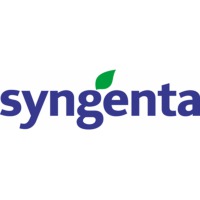A CLAIM that present proposals to ban neonicotinoid insecticides and introduce onerous new regulations on other chemicals up for approval could lead to a complete loss of investment by major chemical companies was made yesterday. Mike Bushell is the principal scientific advisor with Syngenta, the Swiss-based chemical company currently embroiled in a battle to retain the use of one of its major pesticides used in the treatment of oilseed rape seed. He was adamant that no-one would invest in any future programme of insecticide approval if new regulations came in. "Any new product with even moderate toxicity to bees would require an incredibly expensive field programme using thousands of beef hives. It would be impossible and impractical to run such a programme and nobody would invest in it,” he said. He believed that much of the current furore over the future use of neonicotinoids was ideologically driven by those who wished to remove all crop protection products from the market.
Source: Scotsman, 26 February 2013
http://www.scotsman.com/business/food-drink-and-agriculture/eu-move-cou…

- Log in to post comments

Syngenta continues to ignore compelling evidence
In July 2010 I published a ground-breaking discovery on the toxicity of neonicotinoids to arthropods in the journal Toxicology (attached). My paper convincingly demonstrated that the risk of chronic exposure of arthropods (including bees) to a relatively new class of pesticides, called neonicotinoids, which are mainly produced by Bayer CropScience and Syngenta, had been severely underestimated. I have presented my findings at the annual meeting of the Swiss Toxicology Society on 22 November 2012, which was attended by Syngenta employees (lecture attached). Would Syngenta care to comment on my findings or will the thiamethoxam producer continue to ignore compelling evidence implicating neonicotinoids in insect decline, and strongly pointing to a need to improve risk assessment of pesticides for honey bees? Using data recently published by Oliviera, the ecotoxicologist Francisco Sánchez-Bayo calculated that the toxicity of thiamethoxam to honey bees follows the Druckrey-Küpfmüller equation ctn = constant, where c = exposure concentration, t = median time to lethal effect, and n= time reinforcement exponent, always greater than 1. The actual value of n for thiamethoxam's toxicity to honey bees = 2.21 (r2=0.9, p<0.001). The implication is that as little as 0.1 ppb (0.1 microgram per kg) thiamethoxam in pollen is lethal to bees within a week.